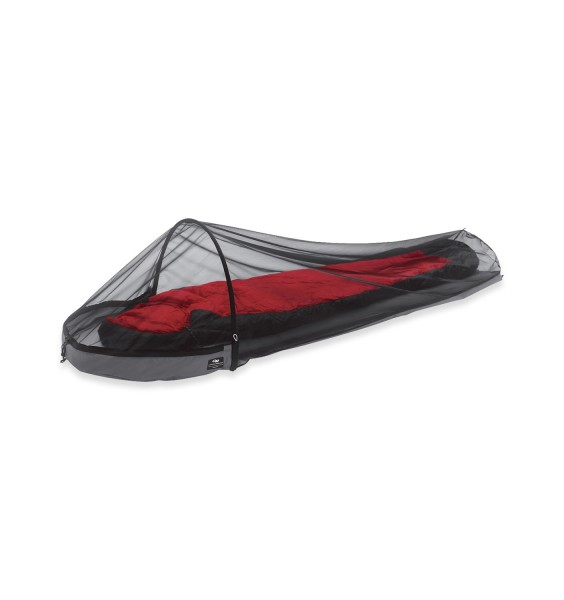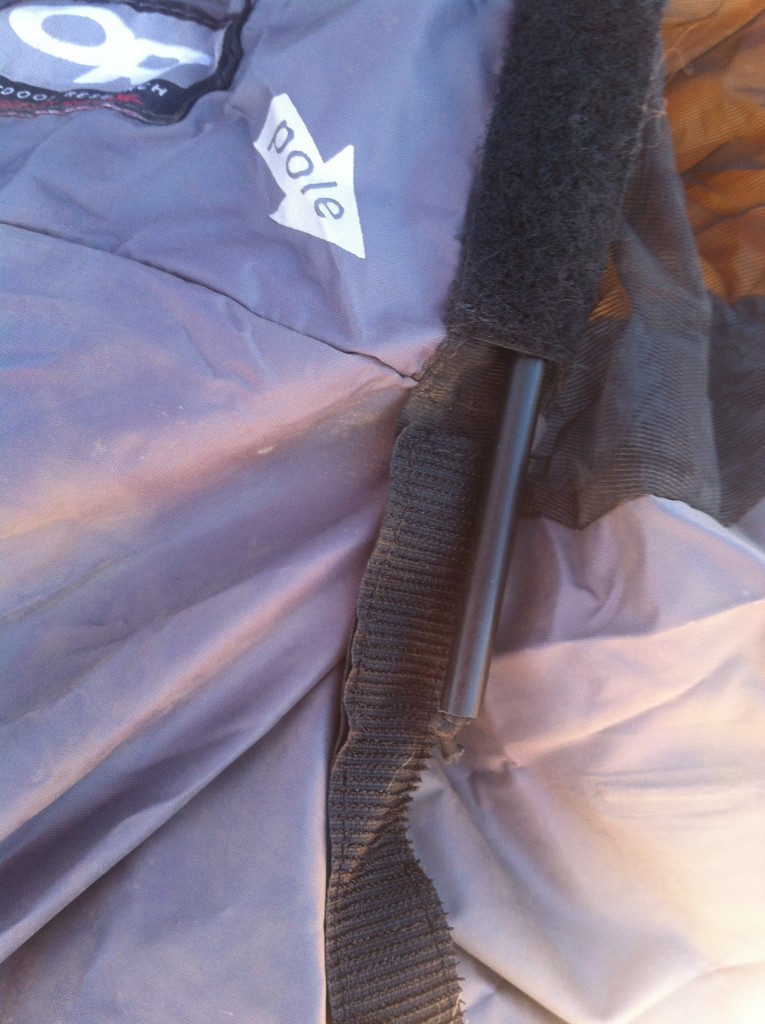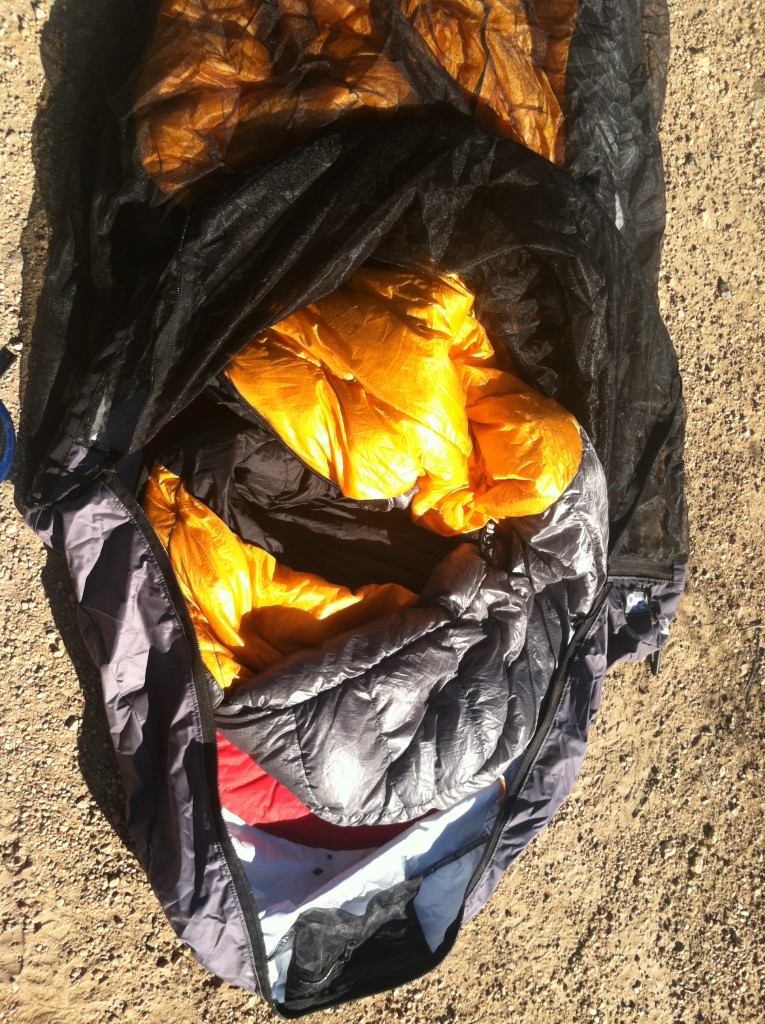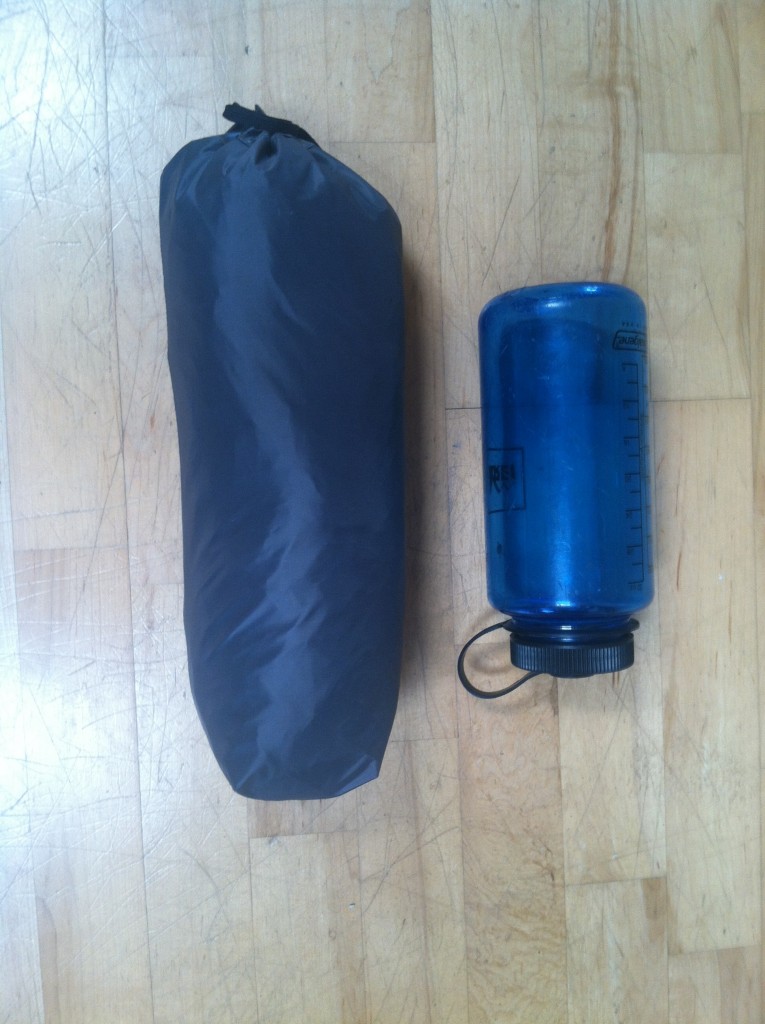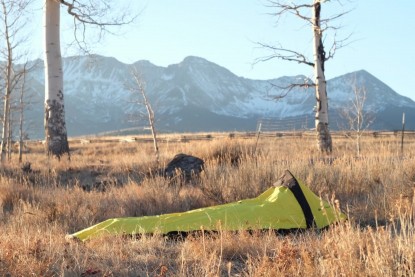Outdoor Research Bug Bivy Review
Our Verdict
Our Analysis and Test Results
A niche product is always useful to the right customer. If heading out into a buggy environment where insects are more of a threat than potential storms, consider the Bug Bivy as the low weight and durable design will keep a camper away from bugs without the needless weight and bulk of a tent.
Performance Comparison
Weather Protection
While this bivy can be great for some niche uses, it has one major flaw: there is nothing stopping a camper from getting completely soaked in any kind of rain. A traditional bivy sack will use some form of waterproof or water resistant material over the body, typically paired with an insect net near the face, so that it is a stand-alone system and a lightweight alternative to a tent. The Bug Bivy does have a waterproof bathtub style bottom, which helps to not soak up dampness from the ground if it gets a little dewy out while you sleep. However, the rest of the bivy is made of a micro net mesh. So, if you are considering bringing a tent along only to keep away from insects and there is little to no chance of rain, the Bug Bivy would be an awesome option that can save pounds off of a pack. Unfortunately, a rain tarp would be needed in the event of any type or amount of precipitation, so we recommend doing research on available shelters along the trail and incoming storms or potential weather. Those on the East Coast near the Appalachian Trail will come to appreciate this product as it can be easily pitched in the many shelters dotting the trail and cuts out the weight of carrying a tent, all while keeping the user safe from the deluge of insects one expects in humid summer weather. One thing to note is that the waterproof bottom is not seam sealed, so if you plan on using an added tarp for storms and potentially sleeping in a puddle, you'll want to pick up a seam sealer product to block out all of the water.
One downside to its insect protection that there isn't anything at the foot of this bivy to keep the material from laying flat against your legs and feet. For steamy climates and seasons, some people can sleep partially or mostly on top of a sleeping bag, which would then leave your legs and feet vulnerable prey to pesky mosquitoes. One resourceful tester got around this by using a binder clip with cord attached to it, clipping the binder clip to the foot area and gently guying out the mesh with the cord.
Ventilation
How can you get more breathable than a micronet mesh fabric? Despite the inherent shortcomings in a non-waterproof bivy, when used in the dry conditions its intended for, this product has the ultimate in breathability and the comfort of 'feeling open' while being protected from insects.
Comfort
The most comfortable bivy sack is the one you don't realize you are in, and in this sense we felt was the OR Bug Bivy was one of the most comfortable bivy reviewed. There may be some campers that would require a wider area and might feel cramped in the 25 inch shoulder space available. However, most people will fit comfortably inside - most of this product is made of mesh which gives it a little stretch for getting in and out and most sleeping pads run no wider than 25 inches at the largest spot anyway. We found that once we were in and settled, we had plenty of space. The straps to hold your sleeping pad are very helpful to keep things organized while getting settled and throughout the night. One other nice touch is that there are mesh pockets on the inside that are perfect to help keep in place a few small items like your headlamp.
Weight
This is an incredibly light bivy sack, though for weight it comes in neck and neck with our Editors' Choice waterproof minimal bivy, the MSR AC. The addition of a tent pole and a durable, waterproof 70 Denier bath tub floor in the Bug bivy add to the weight of this product. For the trips when insects are the only environmental concern, the 16 ounces are easily squirreled away into most packs. The tent pole can be left at home to reduce weight. While slightly annoying, having the netting against your face is reasonable and can save the weight of a few ounces of plastic and shock cord.
Packed Size
This bivy can fit nearly anywhere, almost in a pocket, and for a niche product, the lighter and smaller it is, the more likely it will be brought along. Of course, this is taking into consideration that the bivy is packed separately from the pole. As is the case with most tents, the largest part to store is the poles. Even small tent poles take up space, and there is no exception here as the 4-section plastic pole collapses to 15" long, making the stuff sack a bit long and narrow if you pack the pole along with the rest of the bivy. This can make it awkward to squeeze into a tight pack. Therefore, we recommend storing the tent pole separately as the bivy itself is very compressible and can be crushed to nearly the size of a large grapefruit or a softball. Our testers found that even when a full tent was brought camping, often the bug bivy was tossed in as a fun alternative for warm or clear nights when camping under the stars was preferred — a luxury well worth the space.
Best Applications
This product is made for camping in warm and humid environments where rain is less of a threat than insects. This would also be a good option for people traveling to parts of the world where they need protection from insect bites even when staying in a hostel or bungalow.
Value
While $89 might be a lot to spend on a luxury item, for those in areas where this product may be useful, such as along the Appalachian Trail, it is well worth the cost and can greatly improve the camping experience with little-added weight and bulk to a pack.
Conclusion
Not every trip out into the backcountry is under the threat of rain, and for times when bugs and starry nights are expected, this bivy is a fantastic addition to a camping kit. While larger campers might find it cramped, most will come to appreciate the open views and lightweight design.


